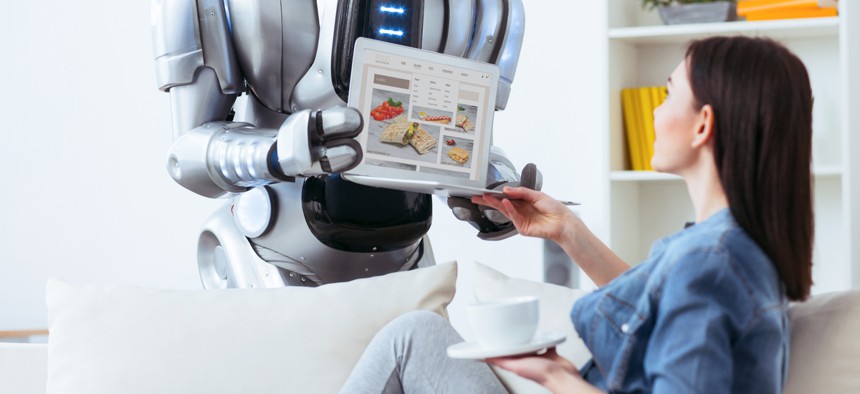COVID-19 Will Spur New Robot 'Friends' and Helpers

Dmytro Zinkevych/Shutterstock.com
Socially assistive robots interact with people and can perform household chores, accomplish health care tasks, and offer emotional support.
Socially assistive robots seem especially promising during the pandemic, says a cognitive scientist.
“In general, I don’t think the public is very aware of what these robots can do to improve our lives,” says Jeffrey Krichmar, professor at the University of California, Irvine. “There’s more education that needs to be done. I hope COVID-19 will be a wakeup call to our robotics community to spur new ideas.”
Socially assistive robots interact with people and can perform household chores, accomplish health care tasks, and offer emotional support. Mobile devices with multiple sensors and manipulators, they communicate through wireless internet connectivity and can function either autonomously or via remote control. The robots work in education, health care, and business, as well as in disaster relief operations.
Telepresence robots, for instance, allow children or adults homebound with a chronic illness or other medical condition to engage in school or workplace activities. The units are physically located in the classroom or office, which gives their users mobility and a sense of being on-site.
“As we begin to reopen [society], I anticipate a hybrid situation where some people can attend school or go to work, but others must stay home,” Krichmar says. “Being able to participate remotely through a moving robot could make that transition smoother. I can also see this technology expanding to a wider population. For example, people could visit their relatives in nursing homes or hospitals this way.”
Robotic dogs, cats, and baby seals can provide emotional support to those who are lonely or anxious due to shelter-in-place restrictions, along with the elderly and children with neurodevelopmental disorders—similar to the comfort that a pet offers but without the upkeep. These are not yet in widespread use, however, because they’re costly and limited in their capacity.
Krichmarl leads the university’s Cognitive Anteater Robotics Laboratory, where researchers are designing robotic systems that mimic the mammalian brain. A number of the lab’s projects involve the Toyota Human Support Robot. Called CARL SR, it’s been programmed to perform such basic tasks as serving meals, putting away groceries, and taking out the trash, as well as functions requiring higher-level cognition skills. These include anticipating a person’s needs and retrieving any associated objects, as well as learning where they’re located.
Krichmar is confident that assistive robots will, in the future, play a larger role during crises like the current one. He sees parallels to Japan’s Fukushima Daiichi nuclear disaster in 2011. “That accident highlighted the fact that robots were not ready to help, which led to a number of advances in rescue robotics,” Krichmar says.
“I’m hopeful that this pandemic will prompt the socially assistive robotics community to make progress so that we can be prepared to help in future health crises.”
This article was originally published in Futurity. It has been republished under the Attribution 4.0 International license.



